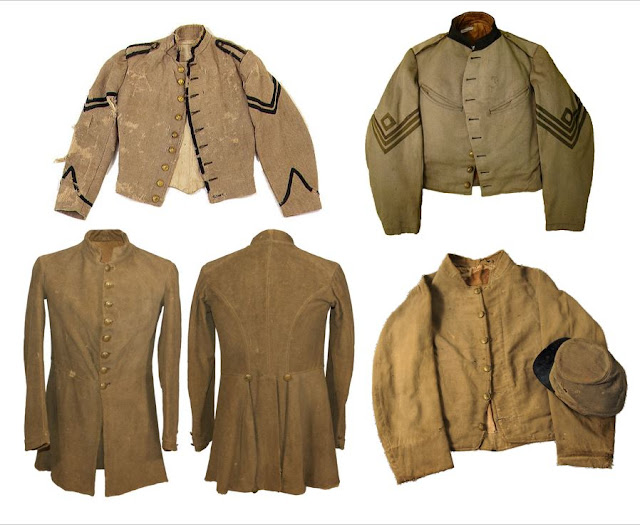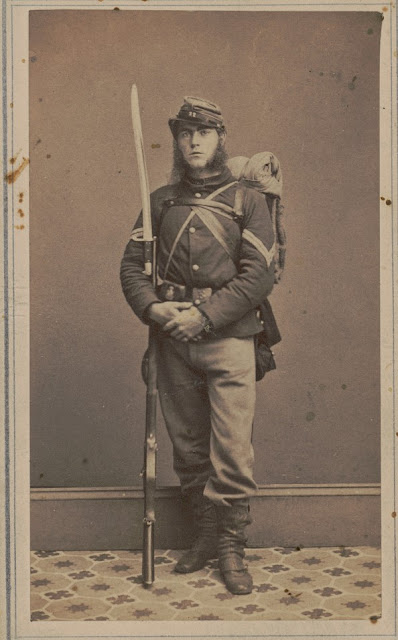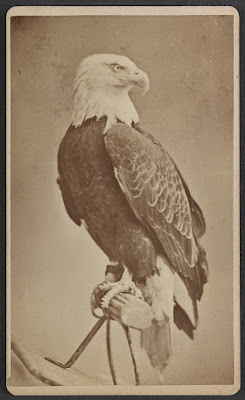The Odyssey of Zollicoffer's Body
Brigadier
General Felix K. Zollicoffer of the Confederate Army was killed in action January
19, 1862 during the Battle of Mill Springs, Kentucky. The morning of January 19th
was beset by a heavy fog over the battlefield of Fishing Creek and while trying
to reconnoiter the Federal position, General Zollicoffer rode too close to
Federal lines and was shot from his horse.
Colonel
Speed S. Fry of the 4th Kentucky Infantry is generally given credit
for shooting down the General. As reported by the Louisville Journal,
Fry “was in the act of leading his regiment into a charge upon the [15th]
Mississippi when General Zollicoffer, accompanied by his aide, rode unto him
and said “You are not going to fight your friends, are you? These men (pointing
to the Mississippians) are your friends.” In the meantime, Zollicoffer’s aide
fired upon Colonel Fry, wounding his horse, from which wound the animal died.
Colonel Fry then turned and fired upon Zollicoffer with fatal effect.”[1]
Captain
J.A. Vaughan of Fry’s regiment was an eyewitness to this event and described what
he saw. “He had been riding an iron-gray horse. He wore a blue military cap, a
single-breasted blue uniform coat with colonel’s shoulder straps,” Vaughan
wrote. “He was well out on the angle of the road. Colonel Fry rode on about 25
or 30 feet when a man galloped up from behind. Our stranger passed him a few
yards, fired his pistol at Colonel Fry, and turned back. The Colonel
immediately wheeled his horse remarking, “That is your game, is it?” He raised
his pistol and fired at the man on the gray horse who remained standing. A good
many of us fired also and on account of the dense smoke after the firing, we
could not see who fell.”
Several
minutes later, Vaughan was able to visit the site of the confrontation and
found the Confederate general laying dead upon the ground. “He was lying flat
on his back, his arms extended. He had upon his person a white rubber overcoat, unbuttoned, a blue
Federal army cap, and a double-breasted blue army officer’s coat, the top
buttons of it unbuttoned displaying in a side picket the top of a willow flask,”
he stated. “A field glass was slung from a leather strap on the outside of his
rubber coat. Underneath this coat but outside of his uniform, his sword was
buckled. Not wishing to disturb his arms, I unbuckled the field glass strap and
took off his sword and belt, gathered them up, pulled his cap down over his
eyes, and left him.” Vaughan then turned over the field glasses, sword, and
belt to Colonel Fry later that day but other Federal soldiers quickly picked over the General’s body, cutting the buttons from his coat, removing nearly all
of his clothing such that when it came time to prepare Zollicoffer’s body for
burial, Surgeon Cliff had to approach Vaughan about getting him some clothing. “I
informed him that I had come across Colonel Joel Battle’s trunk and in it was
a blue uniform. He went with me over to my quarters and I delivered the uniform
to him and in conversation he stated that Zollicoffer had three bullet wounds
in his body- one small and two large.”[2]
 |
| Colonel John Connell, 17th Ohio Infantry |
A rather disgusted Federal described what happened next. "At Louisville, the bodies of Zollicoffer and his aide were placed in elegant and expensive burial cases by the munificence of the government he had fallen trying to overthrow," he wrote to the Cincinnati Gazette. "They were sent here to Camp Wood, met at the cars by a 'Guard of Honor' from one of our Ohio regiments, and thus carried to the headquarters of the division where another 'Guard of Honor' taken from the U.S. Regulars received them with presented arms." [3]
Zollicoffer’s body remained in Federal hands until January 31, 1862 and was apparently considered a war trophy that was visited by many officers and men. "To division headquarters as to a curiosity shop flock generals, colonels, and epauletted gentlemen to do honor to the bodies, elbowing their way through the 'Guard of Honor' posted so thickly around that their beats are not five paces long," continued the grumpy Federal. Zollicoffer's body was then embalmed by the medical director of the division assisted by an unnamed "brigadier general with upturned sleeves." Colonel John Connell of the 17th Ohio Volunteer Infantry had known Zollicoffer when he was a congressman and along with another soldier visited the body. “He lay in a tent wrapped in an army blanket, his chest, left arm, and side exposed,” it was reported. “A tall, rather slender man with thin, brown hair, high forehead, somewhat bald, Roman nose, firm wide mouth, and a clean shaved face. A pistol ball had struck him in the breast a little above the heart, killing him instantly. His face bore no expression such as is usually found on those who fall in battle- no malice, no reckless hate, not even a shadow of physical pain. It was calm, placid, noble. But I never looked upon a countenance so marked with sadness. A deep dejection had settled on it. The low cares of the mouth were distinct in the droop at its corners, and the thin cheeks showed a wasting which comes through disappointment and trouble.” [4]
Zollicoffer’s body remained in Federal hands until January 31, 1862 and was apparently considered a war trophy that was visited by many officers and men. "To division headquarters as to a curiosity shop flock generals, colonels, and epauletted gentlemen to do honor to the bodies, elbowing their way through the 'Guard of Honor' posted so thickly around that their beats are not five paces long," continued the grumpy Federal. Zollicoffer's body was then embalmed by the medical director of the division assisted by an unnamed "brigadier general with upturned sleeves." Colonel John Connell of the 17th Ohio Volunteer Infantry had known Zollicoffer when he was a congressman and along with another soldier visited the body. “He lay in a tent wrapped in an army blanket, his chest, left arm, and side exposed,” it was reported. “A tall, rather slender man with thin, brown hair, high forehead, somewhat bald, Roman nose, firm wide mouth, and a clean shaved face. A pistol ball had struck him in the breast a little above the heart, killing him instantly. His face bore no expression such as is usually found on those who fall in battle- no malice, no reckless hate, not even a shadow of physical pain. It was calm, placid, noble. But I never looked upon a countenance so marked with sadness. A deep dejection had settled on it. The low cares of the mouth were distinct in the droop at its corners, and the thin cheeks showed a wasting which comes through disappointment and trouble.” [4]
On
January 31st, a contingent of Federal officers set out to return the
bodies of General Zollicoffer and Lieutenant Bailie Peyton to the Confederates
for burial. This contingent included two brigadier generals, two colonels, two adjutant generals, the medical director of the division, two other surgeons, an ex-sutler, the correspondent of the Louisville Journal, a commissary clerk, the chief of artillery for the division, a New York journalist, a detachment of cavalry, and two four-horse ambulances, each ambulance carrying one body. Chaplain Eurotus H. Bush of the 49th Ohio Volunteer
Infantry accompanied the body and provided this account of returning
Zollicoffer. “Hearing that they were to be taken to General [Thomas C.] Hindman’s
headquarters today, I felt a strong desire to accompany the expedition,” he
wrote. Bush secured permission from Brigadier General Richard Johnson, Johnson
appointing Bush the chaplain. “Early this morning, the ambulance and escort
left camp for General Hindman’s lines. The escort consisted of General Richard
Johnson, General James S. Negley, parts of their staffs, several brigade
surgeons, one of the Southern surgeons (Dr. Cliff) taken prisoner at Somerset,
and quite a number of other officers; besides all these, Captain Gaddis’ company
of cavalry. In all a very respectable escort for two who had fallen in death
while contending against the right.”
“We
went as far as Horse Cave before seeing any of their pickets; then we saw to
the left in a large corn field three suspicious-looking mounted fellows. They
stopped for a moment when, having obtained a good look at us, they bounded away
southward as if his Satanic majesty was after them and their safety depending
on making fast time. In the meantime, our flag of truce was borne aloft so that
they might know that we were on a mission of peace. About two miles beyond they
ventured to wait until they were satisfied they were not to be hurt. General Johnson
approached the party, shook hands with the commanding officer, communicated his
business, and in a moment, we were all moving forward,” Bush stated.
“Stopping
at Woodlawn, a very fine public house kept by a true Union man (W. Ritter),
General Johnson sent one of the Texas Rangers to General Hindman to inform him
of our coming and business. The Texas Rangers are a motley set; they have no
uniform, no discipline, no manliness, not intelligence, and no honor. They go
about prowling the countryside stealing horses, hogs, and cattle, burning houses,
railroad bridges, grain, straw, and fodder of all kinds; in fact, they are a
miserable gang of outlaws,” he wrote.
 |
| General Thomas C. Hindman |
“In
a little over two hours from the time the Ranger left us, Hindman and his troupe
were seen coming. He halted the company of cavalry that accompanied him some 20
rods from the house where we were, riding a little nearer himself, he
dismounted and met Johnson and Negley with considerable courtesy and some
dignity. I should think General Hindman about 45 years of age, medium height,
light eyes, sallow complexion, sports a mustache and goatee, wears his hair
long and lets it fall in ringlets on his shoulders. He is of nervous temperament,
moves quick, is restless, and always moving, has something of the dare-devil in
his expression, and upon the whole is rather an interesting subject to study
but by no means a remarkable man.” The officers of both armies soon fell into
conversation with each other discussing the war and sharing opposing convictions
as to its outcome. “A great many pleasantries passed between us as well as some
dry joking. Quite a number expressed the wish that we might meet again under
other circumstances and many a glass was drunk by men that will next meet in
deadly strife on the field of battle or at the bar of the final judge,” Bush
related. “When the generals parted, it was with many expressions of mutual
regard and affection.”[5]
The
Confederates placed Zollicoffer’s body on a train to Nashville the following
day where preparations were made for what amounted to a state funeral for the
beloved General. “The mortal remains of General Felix K. Zollicoffer arrived on
the Louisville train yesterday at 2 o’clock, and were escorted from the depot
through some of the principal streets of the capitol where they now lie in
state in Representatives’ Hall,” reported the Nashville Union. “The
procession was composed of a military escort, the governor of the state [Isham
B. Harris], and heads of executive departments, the Senate and House of
Representatives of the Tennessee Legislature, the military, and citizens in
carriages and on foot.”
“Colonel
C.H. Williams of the 20th Tennessee, Lieutenant Colonel J.F. Neill
commanding the 23rd Tennessee, and Major D.G. White of General
Hardee’s staff had charge of the escort which was one company of the 20th
Tennessee. We shall today pay the last tribute to a brave, honorable, and able
civilian and soldier before all that is mortal of him shall be consigned to the
tomb. He was a Tennessean whom all respected and whose name will be recorded on
the pages of immortal history. Sadness and mourning will drape our city, but
henceforth, his name will be cherished as one worthy of our highest regard and
homage.”[6]
The
funeral the following day was one of the most memorable moments of the Civil
War for Nashville residents. “The funeral obsequies of General Zollicoffer on
Sunday afternoon were attended by a large concourse of ladies and gentlemen,” it
was reported. “The hall of the House of Representatives was animated with a
living mass of anxious and solemn faces. Right Reverent Bishop Otey performed
the funeral services according to the impressive form of the Episcopal Church,
and delivered a touching and appropriate discourse. An immense procession of
military, citizens on foot and horseback and in carriages, the Typographical
Association [Zollicoffer had long been a newspaper editor], the state and city
authorities, followed the remains to its last resting place. It was an imposing
demonstration and evinced the universal affection and respect in which he was
held by the people.”
 |
| Sash worn by General Felix Zollicoffer on the day he was killed at Mill Springs (Photo courtesy of Brunk Auctions) |
General
Felix K. Zollicoffer was buried February 3, 1862 at the Nashville City
Cemetery. He was 49 years old at the time of his decease and a simple stone
marker indicating his military rank as brigadier general in the Confederate
States Army marks his grave.
[1] Letter from
Colonel Speed S. Fry, 4th Kentucky Volunteer Infantry, Louisville
Journal, January 28, 1862
[2] “Zollicoffer’s
Death,” Captain J.A. Vaughan, Co. B, 4th Kentucky Volunteer
Infantry, National Tribune, June 22, 1893, pg. 3. In a subsequent issue
of the National Tribune, A.P. Connolly of the 6th Minnesota disputed
Vaughan’s claim that he recovered Zollicoffer’s sword stating that Lieutenant
M.C. Tuttle of the 2nd Minnesota had the sword in his possession for
many years but eventually returned it to Zollicoffer’s family. The sword was recently offered for auction by Brunk's Auctions.
[3] "How a Dead Rebel was Honored and a Dead Loyal Soldier Dishonored," Cleveland Morning Leader, February 6, 1862, pg. 1
[3] "How a Dead Rebel was Honored and a Dead Loyal Soldier Dishonored," Cleveland Morning Leader, February 6, 1862, pg. 1
[4] Cleveland Morning leader story and “General
Zollicoffer’s Body,” Fayetteville Observer, February 13, 1862, pg. 2 (FO’s
source was the Cincinnati Gazette)
[5] “From the
Advance,” Chaplain Eurotus H. Bush, 49th Ohio Volunteer Infantry, Cleveland
Morning Leader, February 5, 1862, pg. 3
[6] “Funeral of Late
Felix K. Zollicoffer,” Memphis Daily Appeal, February 5, 1862, pg. 2
(MDA’s source was the Nashville Union of February 2, 1862)















Comments
Post a Comment